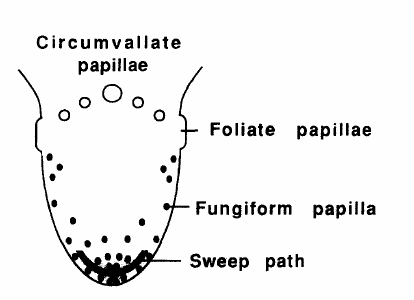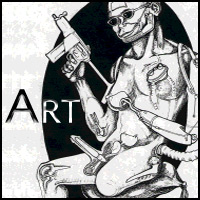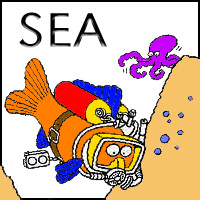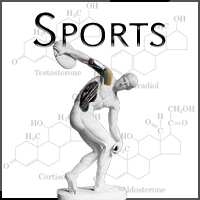|
|
Artificial Taste
Dennis Lu
Introduction:
My topic is on artificial taste, which is created by a taste sensor otherwise known as an electronic tongue. My interest in this topic arose when I decided to do work in cyborgs and medicine. At this point I wanted to research the developing fields of artificial taste and its application to humans who have lost their ability to taste. As I delved into research I found that artificial taste was not primarily used for medical application (see purposes of development section). The articles I found basically consisted of the different types of existing sensors, materials, experiments, uses, robotic surgery, and an alternate view on how our tongue taste. Since, I had the impression that artificial taste was primarily in the medical field I have also included research on causes of loss of taste. This article is split up into four sections: biological function of the tongue. Causes of loss of taste, the electronic tongue, and purposes of its development.
Biological function of tongue:
The definition of taste as stated by the Columbia electronic Encyclopedia is a,, "response to chemical stimulation that enables an organism to detect flavors. In man and most vertebrate animals, taste is produced by the stimulation by various substances of the taste buds on the mucous membrane of the tongue. A taste bud consists of about 20 long, slender cells; a tiny hair projects from each cell to the surface of the tongue through a tiny pore. The taste cells contain the endings of nerve filaments that convey impulses to the taste center in the brain. Only four fundamental tastes, or a combination of these, can be detected by the buds: sweet, sour, salt, and bitter. Only the buds most sensitive to salty flavor are scattered evenly over the tongue. Sweet-sensitive taste buds are concentrated on the tip of the tongue; sour flavors are detected at the sides of the tongue, and bitter flavors at the back. The close relationship of taste to smell gives the impression that a greater variety of tastes exists. This is also why an impairment of smell, as during a cold, may impart the feeling that the sense of taste is diminished., " Taste and smell are also important for identifying nutrient-rich sources and at the same time used to avoid various poisons and predators (Montell 2007, pg. 1). The process of taste begins when food molecules trigger signals in the mouth, which are then sent to the brain registering the specific tastes (Zheng and Keeney 2006 pg. 118). An alternate approach to taste is presented by Todrank and Bartoshuk who say taste sensations are not localized to the locations of taste buds, but rather to areas touched in the mouth (Todrank and Bartoshuk 1991 pg1027). They say that we are unaware of the distribution of taste throughout our tongue. This is why it seems like taste is senses throughout our entire mouth. Todrank and Bartshuk say that there are three types of visible papillae fungiform, foliate, and circumvallate (Todrank and Bartoshuk 1991 pg1028). Within their article they conduct an experiment that involves sweeping solution on parts of the patients tongue. The experiment proved that taste is distributed throughout the mouth and how patients who suffer from localized taste loss do not encounter a change in how they taste (Todrank and Bartoshuk 1991 pg1030). In addition to sweetness, sourness, saltiness, and bitterness there is a new flavor called umami, or deliciousness (Zheng and Keeney 2006 pg 118, Martina, Ionescu, Pigani, Terzi, Ulrici, Zanardi, Seeber 2007 pg 2101).

Anemia
Bell's Palsy - impairment of taste
Brain tumor
Brainstem tumor
Dental cavities
Ear infections
Ear nerve injury
Ear surgery
Excessive smoking
Folate deficiency
Glossitis
Head injury
Herpes zoster oticus - tongue taste loss
Loss of smell - many cases of "loss of taste" are actually loss of smell.
Normal aging - causes reduced ability to taste or smell.
Oral cancer
Oral candidiasis
Poor oral hygiene
Radiation therapy
Sjogren's Syndrome - tasting difficulty
Tongue Conditions - Loss of taste
Tongue infection
Tonsil cancer - Loss of taste
Tonsil disorders - Loss of taste
Tooth infection
Upper respiratory infection
Vitamin B12 deficiency
Wallenberg's Syndrome - loss of taste
Zinc deficiency
The Electronic Tongue:
All of these are causes to the loss of taste, but is taste essential to our everyday experience. Despite this long list of things that cause the loss of taste there has been no research into the actual application of an electronic tongue for humans to regain their taste. Maybe taste isn't very important? Vlasov et al say that taste is less essential to the survival of living creatures, and that the nose was a more important function (Vlasov, Legin, Rudnitskaya 2002 pg. 137). Perhaps the severity of the situation is too dire to be under going unnecessary surgery. People go through life taking for granted taste and when they are faced with cancer turn to radiation. In these situations loss of taste is an acceptable loss due to what the patient has to gain, their life. One day we will see the option of having an electronic tongue that will enable a person to begin tasting again, but till that day we can rest assured that research concerning taste sensors are well on their way.
Chemical sensors are known as analytical instruments. An electronic tongue is based upon chemical sensors that gather information from the chemicals that they react to, which are then processed by a wide variety of pattern recognition programs (Vlasov, Legin, Rudnitskaya 2002 pg. 137). At first the chemical sensors used within the application of the electronic tongue was too selective, meaning that the chemicals looked for a specific chemical (Vlasov and Rudnitskaya 2002 pg. 136). However, as time went on they combined it with less selective sensors, cross-sensitive, and different arrays (Vlasov, and Rudnitskaya 2002 pg. 136). The types of taste that is generated is divided into five categories sourness, saltiness, bitterness, sweetness, and umami (deliciousness). Various chemicals register different tastes, sourness by hydrogen ions including: HCl, acetic acid, and citric acid (Zheng and Keeney 2006 pg 118). Saltiness is registered by NaCl, sweetness by sugars, bitterness by MgCl(2) (chemicals such as quinine and caffeine), and umami by monosodium glumate from seaweed, disodium in meat/fish/mushrooms (Zheng and Keeney 2006 pg 118). In 2003 there were three different ways that sensors gather information using substances, through Polyvinyl chloride (PVC) with plasticizer, Chalcogenide glasses as sensing units, or pulsed voltammetry with six different working electrodes and a silver counter electrode (Toko 1998 pg 1919-36, Sakai, Iiyama, Toko 2000 pg251-5, Legin, Rudniskaya, Vlasov, Di Natale, MAzzone, D'Amico 1999 pg 814-20, Vlasov, Legin Rudnitskaya, D'Amico, Di Natale 2000 pg 235-6, Ivarsson, Holmin, Krantz, Winquist 2001 pg 449-54, Krantz, Stenberg, Winquist, Lundstrom 2001 pg 217-26). This data is gathered from the sensors it needs to be processed through a pattern recognition program which consists of several data processing methods either artificial neural network (ANN), factor analysis, multivariate regression etc…(Vlasov, Legin, Rudnitskaya 2002 pg. 137). Further detail is expressed about ANN as a data processing method that uses algorithms based on recognition processes modeled after the human learning process (Rumelhart and McClelland 1986 pg. 137). After the data is processed we are able to determine what substance is analyzed by the taste sensor. This data provides the user with substance identification, concentration, better threshold of the minimum, and optimize desired levels. Through rigorous tests performed by experimenters the reproducibility and repeatability of the sensors has a very low failure rate. The electronic tongue or taste sensor has the ability to pick the slightest change in chemical concentration where human tongues can not. It's ability to be objective, precise, reproducibility, and consistent make it a valuable tool to our society.
Even though the development of taste sensors put an actual artificial tongue for humans more plausible, robots have also been created to deal with tongue based operations. Transoral robotic surgery (TORS) is used to operate on patients who have tongue based cancers. Robotic surgery is preferred because the incisions are smaller, there is less blood loss, high magnification, three dimensional optics, and overall no real complications. Reports have also stated that operation time is decreased, intensive stays are reduced, and overall patient hospitalization is reduced (O'Malley, Weinstein, Snyder, Hockstein 2006 pg. 1465).
Purpose of its development:
The development of the electronic tongue comes from wanting to have a low cost, analytical, and efficient analysis of food, beverage, packinging etc…(Ampuero and Bosset 2003 pg. 1-12). It was also used to lower the cost of urine and blood, which was used as a way to monitor environmental affects (Logrieco, Brengel-Presce, Siciliano, Tothill 2005 pg. 335-344 Shykhon, Morgan, Hines, Gardner 2004 pg. 706-9). Another realm the electronic tongue appears in is pharmaceutical, where some companies test for bitterness. They use is to, "optimize the level of a sweetener for masking a bitter taste and to select the appropriate reconstitution of drug formula, " (Zheng and Keeney 2006 pg. 123)
Links:
http://www.wrongdiagnosis.com/symptoms/loss_of_taste/causes.htm
http://en.wikipedia.org/wiki/Electronic_tongue
Bibliography
Ampuero, S., Bosset, J.O.,2003. Sense Actuators B: Chem 94(1), 1-12.
Causes of Loss of taste. Retrieved June 12, 2007, from http://www.wrongdiagnosis.com/symptoms/loss_of_taste/causes.htm
da Silva, BA, Antunes, PA, Pasquini, D, et al. (2007). Nanostructured films employed as sensing units in an "electronic tongue" system. Journal of Nanoscience and Nanotechnology, 7(2), 510-4.
Ivarsson P, Holmin s, Hojer NE, Krantz-Rulcker C, Winquist F. Discrimination of tea by means of voltammetric electronic tongue and different applied waveform. Sensors and Actuators B200; 76: 449-54
Krantz-Rulcker C, Stenberg M, Winquist F, Lundstrom I. Electronic tongues for environmental monitoring based on arrays and pattern recognition: a review, Anal Chim Acta 2001; 426: 217-26
Legin A, Rudnitskaya A, Vlasov Y, Di Natale C, Mazzone E, D'Amico A. Application of tongue for quantitative analysis of mineral water and wine. Electroanalysis 1999;11(10-11): 814-20
Logrieco, A., Arrigan, D.W.M., Brengel-Presce, K., Siciliano, P., Tothil, I., 2005 Food Additiv. Contam. 22 (4), 335-344
Martina, V, Ionescu, K, Pigani, L, et al. (2007). Development of an electronic tongue based on a PEDOT-modified voltammetric sensor. Analytical and bioanalytical chemistry, 387(6), 2101-10.
Montell, C (2007) From taste to touch: signaling in model organisms. Springer-Verlag
O'Malley, BW, Weinstein, GS, Snyder, W, et al. (2006). Transoral robotic surgery (TORS) for base of tongue neoplasms. The Laryngoscope, 116(8), 1465-72.
Pioggia, G, Di Francesco, F, Marchetti, A, et al. (2007). A composite sensor array impedentiometric electronic tongue Part I. Characterization. Biosensors & bioelectronics, 22(11), 2618-23.
Pioggia, G, Di Francesco, F, Marchetti, A, et al. (2007). A composite sensor array impedentiometric electronic tongue Part II. Discrimination of basic tastes. Biosensors & bioelectronics, 22(11), 2624-8.
Riul, AR, Malmegrim, RR, Fonseca, FJ, et al. (2003). Nano-assembled films for taste sensor application. Artificial organs, 27(5), 469-72.
Rumelhart DE, McClelland JL (1986) Parallel distributed processing, vols 1 and 2. The MIT Press.
Sakai H, Iiyama S, Toko K. Evaluation of water quanlity and pollution using a multichannel sensor. Sensors and Actuators B 2000;66:251-5
Shykhon, M.E., Morgan, D.W., Dutta R., Hines, E.L., Gardner, J.W. 2004. J. Laryngol. Otol. 118 (9), 706-709
Taste. (n.d.). Columbia Electronic Encyclopedia. Retrieved May 31, 2007, from Reference.com website: http://www.reference.com/browse/columbia/taste
Toko K. A taste sensor. Meas Sci Technol 1998;9:1919-36
Vlasov, Y, Legin, A, & Rudnitskaya, A, D'Amico A, Di Natale C Electronic Tongue – new analytical tool for liquid analysis on the basis of non-specific sensors and methods of pattern recognition. Sensors and Actuators B2000;65:235-6
Vlasov, Y, Legin, A, & Rudnitskaya, A. (2002). Electronic tongues and their analytical application. Analytical and bioanalytical chemistry, 373(3), 136-46.
Zheng, JY, & Keeney, MP. (2006). Taste masking analysis in pharmaceutical formulation development using an electronic tongue. International Journal of Pharmaceutics, 310(1-2), 118-24.
|












